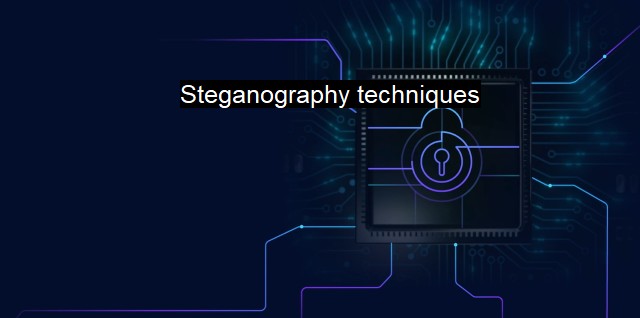What are Steganography techniques?
Uncovering Concealed Communication: A Comprehensive Overview of Steganography Techniques for Cybersecurity
Steganography is an ancient technique that encompasses the art and science of secret communication or hiding information within non-secret data. This technique is used to conceal data within digital mediums such as images, audio, video, or other files. Steganography finds its root in Greco-Roman times, where historians were crafting secret messages on wooden tablets and wax to prevent unauthorized access. The practice continues today, shifting with technological advancements into the digital sphere, where it is most relevant in the realm of cyber security and antivirus.Steganography plays a substantial role because it allows for covert transmission of sensitive data hidden in an unsuspicious medium. Simply put, if encryption is akin to protecting a sensitive letter in an envelope to protect it from prying eyes, steganography is like disguising that letter as a mundane shopping list. At its core, steganography works by replacing bits of useless or unused data in regular computer files with bits of different, invisible information. The hidden elements can be any data such as text, cipher, or even another file.
In today’s tech-led world, steganography techniques primarily operate using multimedia files as hate data like digital images, videos, or audio files are highly dense, making it easier to hide the data without distorting the quality. This enables cybercriminals to obscure malicious code or data in seemingly harmless material, ensuring the content is unnoticed and unseen, travelling from sender to receiver without raising suspicion or alert.
A conventional method of steganography is the least-significant-bit (LSB) technique. LSB changes the final, or 'least significant' bit of each byte in an image or sound file to better hide information. The adjustments are microscopic and almost undetectable to the average observer. under the correct circumstances, it can unravel to reveal hidden messages or data.
A relatively advanced steganographic method includes the use of encryption alongside obfuscation to render the data impregnable. Cryptography-induced Steganography, an example of these advanced techniques, combines classical encryption methods with steganography. This results in an ultra-secure environment, wherein the end user requires a series of keys not only to decrypt the image but also to gain the hidden data within.
Even though antivirus software is proficient in spotting conspicuous malware or suspicious codes, tackling stenographic material with embedded threats poses a significant challenge. Since a steganography-induced file does not exhibit traits of paradox or anomaly, common signature-based antivirus solutions have difficulties recognizing potential infections. Unlike malware, these files seem benign until it's too late.
Machine-learning algorithms aid in remedying this situation. Such algorithms excel at uncovering hidden patterns and concealed mysteries that evade human operators. antispyware techniques like traffic pattern analysis, signature-based detection, statistical analysis, or their combination prove useful in combatting steganographic threats.
In sum, steganography, in the cybersecurity sphere, is a double-edged sword. On one hand, it guarantees private and safe information transmission. Contrary, it provides cybercriminals another tool for tailoring highly sophisticated and undetectable cyber-attack mechanisms. While antivirus software and detection techniques are in constant evolution to better conquer steganography-induced files, cybercriminals are ever modifying and tweaking their methods to remain a step ahead. Thus, comprehending steganography and its continually morphing dynamics poses a consistent challenge to cybersecurity.

Steganography techniques FAQs
What is steganography?
Steganography refers to the practice of concealing a message or information within a different form of data, such as an image or audio file, to prevent detection by third parties.What are some popular steganography techniques used in cybersecurity?
Some commonly used steganography techniques in cybersecurity include LSB (Least Significant Bit) technique, which involves hiding information in the least significant bits of an image, and the spread spectrum technique, which embeds data in the high-frequency components of an audio file.How can steganography be used in cyber attacks?
Steganography can be used by cyber attackers to hide malicious code or malware within benign-looking files, making it harder for antivirus software to detect them. They can also use steganography to exfiltrate sensitive information from a targeted system by embedding it in an image or audio file and then sending it out undetected.How effective are antivirus programs in detecting steganography-based attacks?
Antivirus programs are generally not very effective in detecting steganography-based attacks, as the hidden data is often encrypted and the file itself appears to be innocuous. Some advanced detection techniques, such as analyzing the file's entropy or looking for anomalies in the data, can help identify steganography-based attacks but they are not foolproof.| | A | | | B | | | C | | | D | | | E | | | F | | | G | | | H | | | I | | | J | | | K | | | L | | | M | |
| | N | | | O | | | P | | | Q | | | R | | | S | | | T | | | U | | | V | | | W | | | X | | | Y | | | Z | |
| | 1 | | | 2 | | | 3 | | | 4 | | | 7 | | | 8 | | |||||||